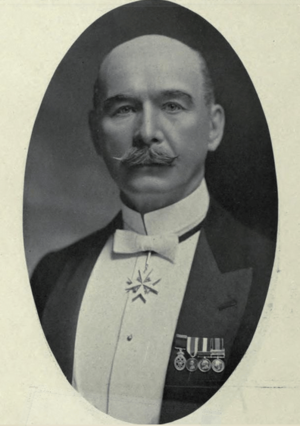James Mason (Canadian politician) facts for kids
Quick facts for kids
James Mason
|
|
|---|---|
 |
|
| Senator for Toronto, Ontario | |
| In office 1913–1918 |
|
| Appointed by | Robert Borden |
| Personal details | |
| Born | August 25, 1843 Toronto, Ontario |
| Died | July 16, 1918 (aged 74) Toronto, Ontario, Canada |
| Political party | Conservative |
| Children | J. Cooper Mason, Harry Mason |
| Military service | |
| Rank | Brigadier General |
James Mason (born August 25, 1843 – died July 16, 1918) was an important Canadian figure. He was a banker, a member of the Canadian Senate, and a military leader.
Mason was born in Toronto, Ontario. He went to private schools and also attended the Toronto Model School, where he was chosen as the top student, known as "head boy."
After finishing school, James Mason started working at the Toronto Savings Bank. This bank later became the Home Bank of Canada. He worked his way up and became the general manager and president of the bank in 1873.
In 1913, Prime Minister Robert Borden chose James Mason to become a Senator. The Senate is part of Canada's government that helps make laws. Mason was a member of the Conservative political party. He later retired from the bank. His son, Harry G. Mason, took over his role as general manager. The bank he had led later faced some financial difficulties.
James Mason also helped start the Toronto Mechanics' Institute. This organization eventually grew into what we know today as the Toronto Public Library. He died at home after having an operation for appendicitis.
Mason's Military Service
James Mason had a long and active military career. He first joined the Queen's Own Rifles in the 1860s. This was during a time when groups called the Fenian Raids tried to invade Canada from the United States.
In 1882, he became a captain in the 10th Royal Grenadiers. He led a company of soldiers during the North-West Rebellion. This was a conflict in western Canada. During the Battle of Batoche, he was seriously injured.
Mason continued to rise through the ranks. In 1893, he was promoted to lieutenant colonel and took command of his regiment. In 1897, he was one of the officers chosen to represent Canada in London. This was for Queen Victoria's Diamond Jubilee, celebrating 60 years of her rule. He even met Queen Victoria in person!
Around 1900, he was put in charge of the 4th Infantry Brigade. He retired from active service in 1910 with the rank of colonel. However, he continued to serve his country. In 1915, he was promoted to brigadier-general. This was for his important work organizing the Reserve Militia of Canada. He also helped a lot with getting people to join the military during the war.
Mason was also a founder and president of the Royal Canadian Military Institute. He was a strong supporter of the British Empire. He also helped create the Empire Club of Canada. The South African War Memorial in Toronto was built mostly because of his efforts.

